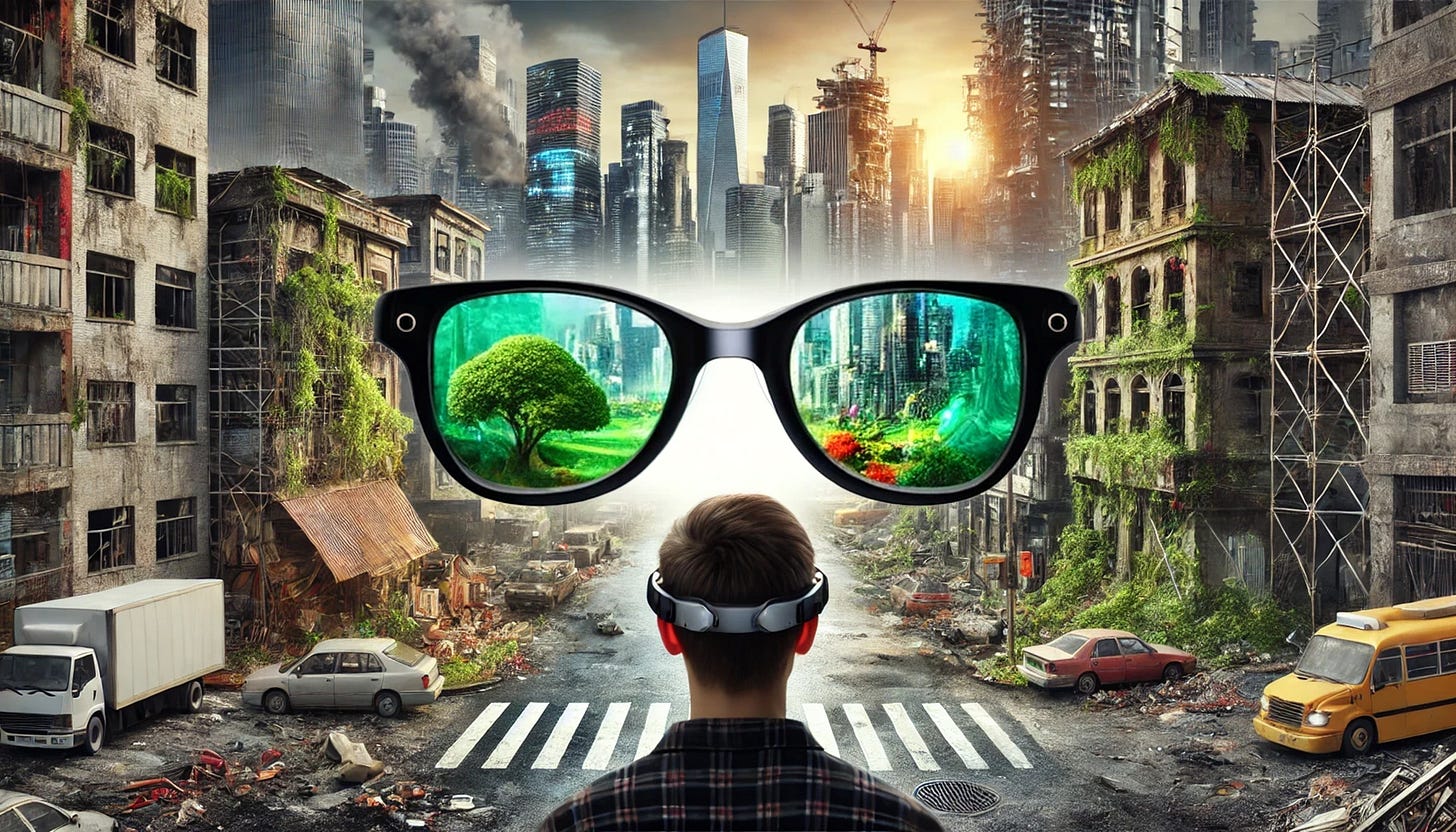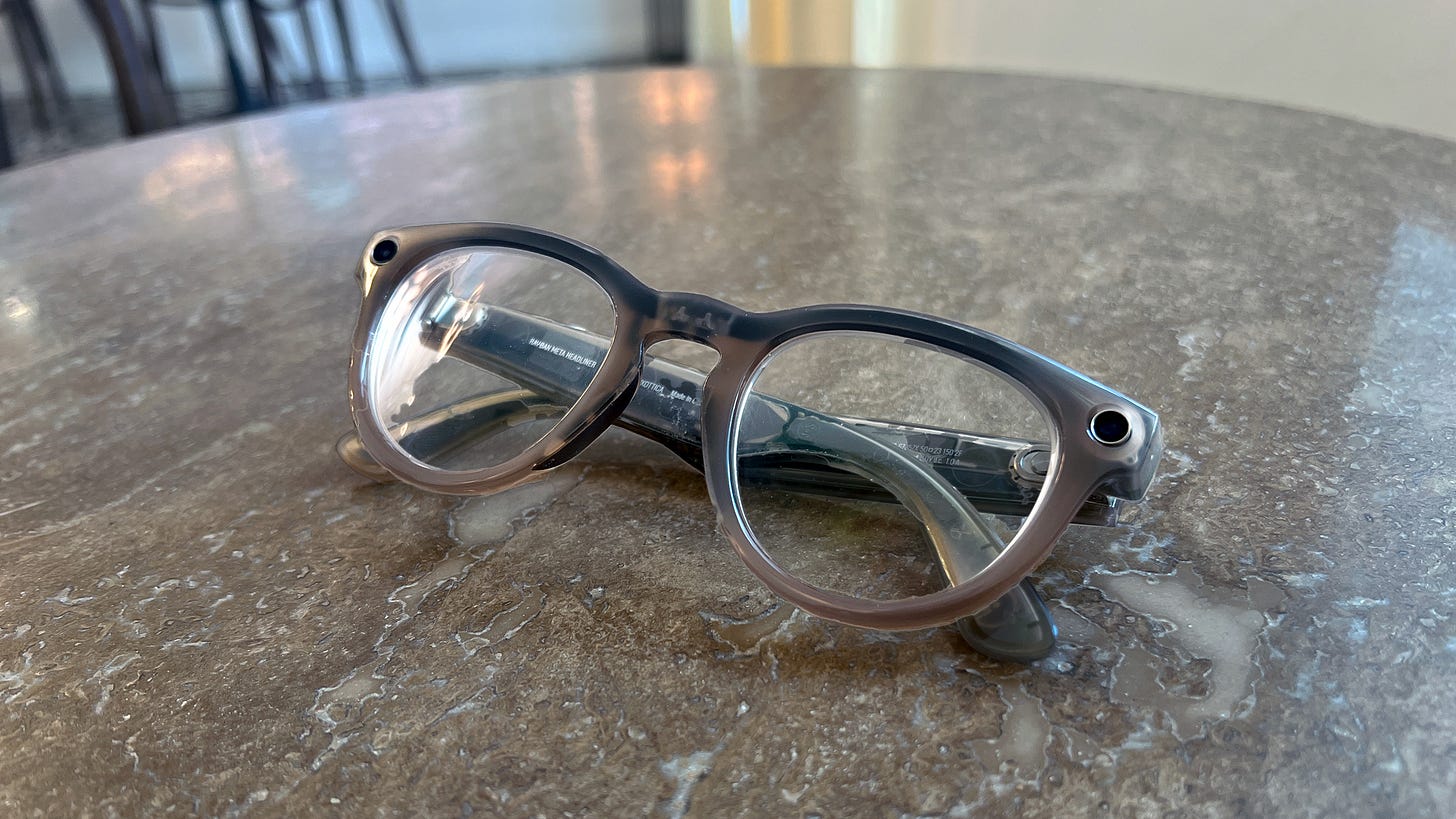The Eyes Have It: My Adventures with Smart Eyeglasses
Meta Ray-Ban smart glasses are my new everyday specs.
Years ago, I was asked to write a pitch for a multimedia narrative project that could span TV, print, online, and the then-new worlds of virtual and augmented reality.
A key part of the world-building was that in this near-future society, nearly everyone wore smart glasses that could observe and react to the world around the wearer. These glasses used augmented reality to cover over parts of the real world, for example, shielding the rich from having to see the poor and homeless.
The pitch went nowhere -- as these things usually do -- but the idea that eyewear was the key to widespread adoption of reality-reshaping technology stuck with me. That's one of the reasons I've been following the increasing popularity of Meta Ray-Ban smart glasses, a joint project of the Facebook/Instagram/Threads owner and the eyeglass maker.
I've been thinking even more about it since I saw some of my colleagues using the same smart glasses to shoot decent-quality POV video of PC-building projects. So when Meta offered me a pair to try out, I jumped at it.
After a couple of weeks, I'm prepared to call these my default everyday glasses. Not because they're as powerful as the smart glasses in my long-ago TV show pitch, but because they do a decent number of things decently well, while not violating the traditional form and function of a pair of eyeglasses.
(I used to say the same thing about 2-in-1 laptop/tablet hybrids -- the successful ones did the least to mess with the established form of the clamshell laptop. Hence the ongoing success of the Yoga-style laptop with 360-degree hinges.)
The Meta Ray-Ban glasses do three main things. They take photos and short videos (up to three mins), act as a wireless Bluetooth headset for making phone calls (or listening to music and podcasts), and, most importantly, they are a gateway to an always-on voice-activated version of Meta AI.
I'm wearing the new Headliner design, which is currently on sale for Black Friday. At about $300 for the frames, plus roughly $250 for my prescription progressive lenses, I've certainly spent much more than that on a pair of glasses.
Unlike the circa-2013 Google Glass era, the Meta Ray-Bans appear to be normal specs to anyone not looking closely and, in fact, are not bad-looking at all. Only the tiny round lenses at the temples (one an actual camera, the other an indicator light) mark the frame as different.
I originally thought I'd use the glasses mostly for photos and video, and while I do use them for that, it's actually the other features that I find more interesting.
First, I hate wearing earbuds in general, finding them uncomfortable and too isolating. So making or receiving an old-fashioned phone call is a hassle because I don't want to pop in AirPods, hate the sound of speakerphones, and certainly don't feel like holding a big glass slab of a phone up to my head.
But using the Meta Ray-Ban glasses as my wireless headset has made phone calls, if not pleasant, at least more tolerable. It's also good for listening to podcasts while doing something else because, again, you're not overly isolated.
And the built-in support for Meta AI is much more useful than I imagined it would be. I can ask a question, fact-check something, do some quick math, and more, all in a conversational tone. I've played around extensively with many of the major AI players, and while Meta AI is not my overall favorite, it's usually decent or better. The nice thing is that as a cloud-based AI, it can continuously improve while being accessed with the same hardware.
The biggest weakness in these glasses is battery life. Much like a gaming laptop or older iPhone, one charge is not going to get you through a full day, especially if you use its smart features a bunch. Sometimes I get 3-4 hours, sometimes 5-6 hours. But the more you take photos or talk to Meta AI, the quicker the battery drains.
Right now, the only way to charge these is in the included USB-C case, so you'll need to take them off and stow them to recharge. That means I'm keeping my old glasses as a backup. At least I don't have to carry both pairs with me. If the battery dies, it's not like the lenses go black -- they still work fine as a pair of just plain old eyeglasses.
The other interesting observation is how different public perception is compared to the days of Google Glass. Back then, people were horrified and offended by the idea of a photo-taking wearable. Hence the term Glassholes. Today, people I talk to are usually fascinated and also surprised by the image quality when they see the results.
It's not going to replace my iPhone as my main camera, but I'm more likely to stop and grab a quick snap of something interesting on the street if I don't have to whip my phone out. Recent examples include a giant V8 vegetable juice delivery truck on my block, a cake shaped like a turkey at a local bakery, and a pizza shop hiding in the back of a Brooklyn record store (see above).
The idea behind my long-ago TV/multimedia pitch was that these state-of-the-art smart glasses -- simply called The Eyes -- would be a way for the affluent to separate themselves from society, and create a new category of digital haves and have-nots. I'm glad that the way wearable development is going is about enhancing our interaction with the world, not finding new ways to cut ourselves off from it.
Black Friday and beyond
There are so many great new tech devices hitting stores just in time for the holiday shopping season to really kick into high gear. Here are a few hands-on thoughts from myself and my team on some of the highlights.




